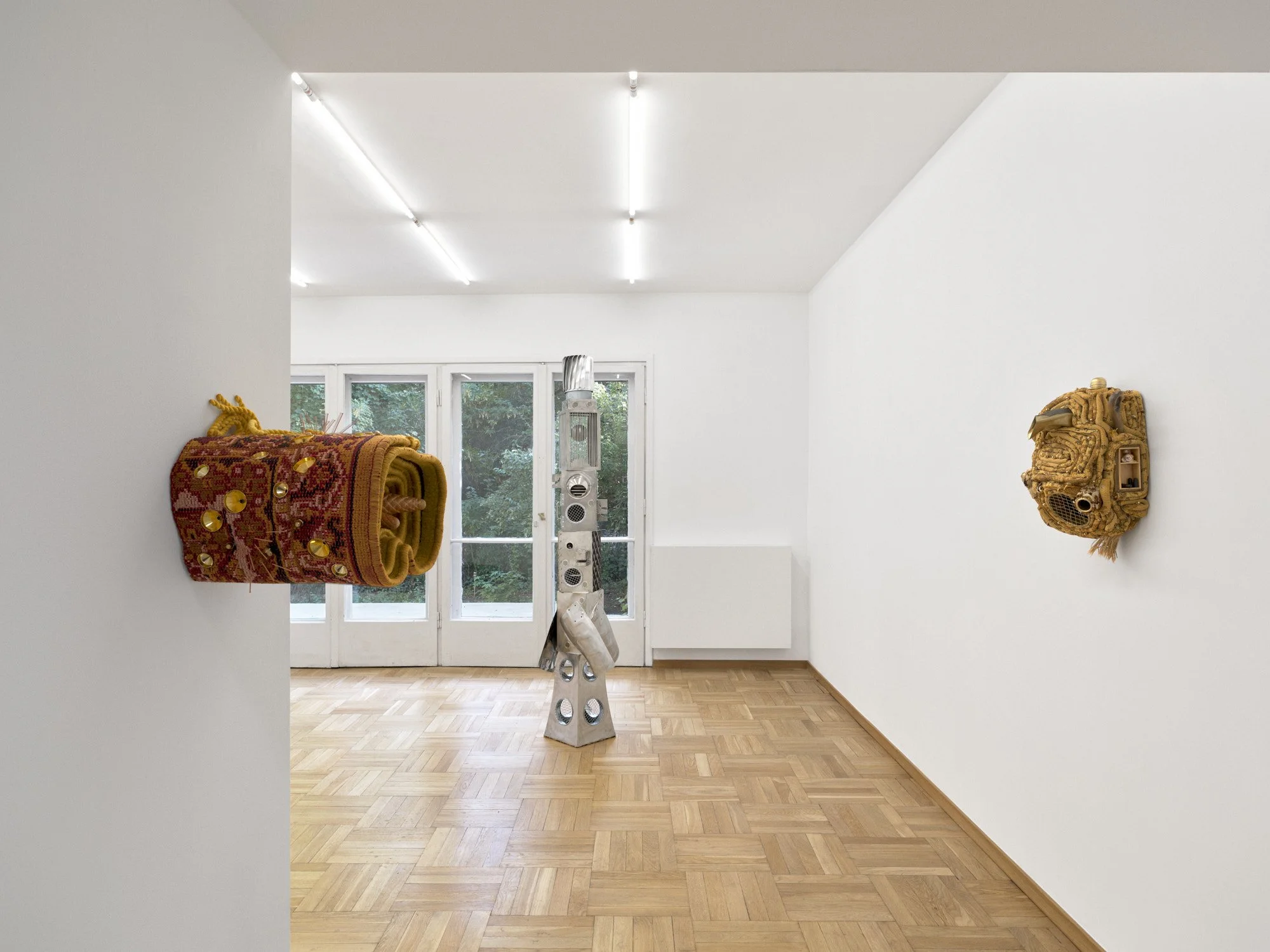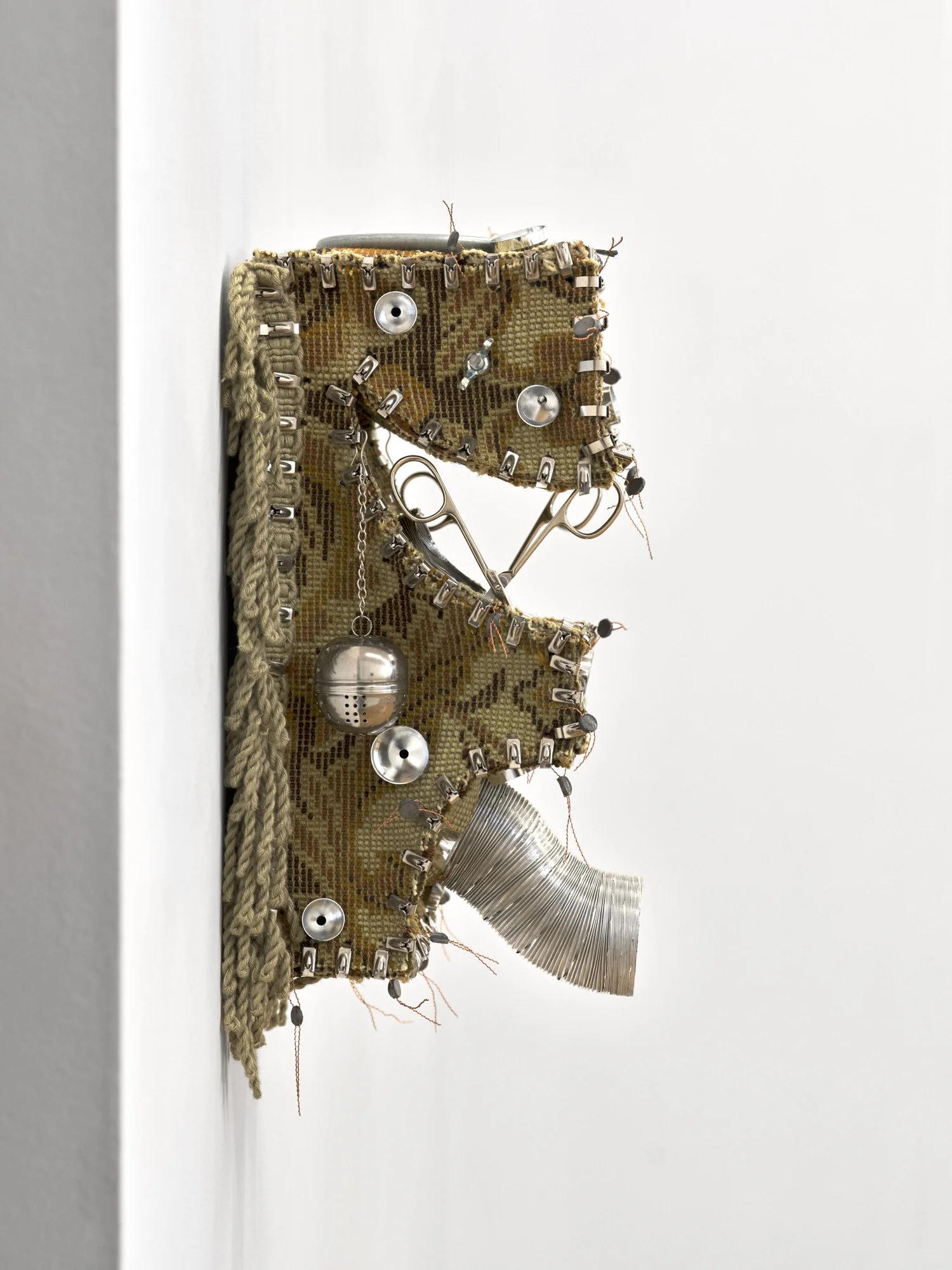
pharmakon, wschód,
Warsaw, poland, 2025
Pharmakon (as part of Warsaw Gallery Weekend)
Venue WSCHÓD, Warsaw, Poland
Date September 18 - November 8
Photography Bartosz Zalewski


























Press Release
Cezary Poniatowski
Pharmakon
September 19 - November 9, 2025
Wschód Warsaw
Cezary Poniatowski’s solo exhibition revolves around the ancient concept of pharmakon and its multilayered historical and cultural references. The artist creates reliefs using carpets, metal zip ties, ventilation elements, and other materials. The objects are hollow inside, sewn together, with the underside of the carpet turned outward, while the familiar surface remains hidden. This choice is meant to evoke a sense of claustrophobia—both within the work itself and in the viewer. The reliefs take on forms reminiscent of gargoyles and architectural ornaments, combining raw elegance with a quasi-jewelry character. Poniatowski treats them as examples of “tormented” craftsmanship.
The notion of pharmakon, developed by Plato in the dialogue Phaedrus and later analyzed by Jacques Derrida, signifies both remedy and poison. For Plato, writing was at once a cure against forgetting and a threat to the intellect. More broadly, pharmakon is an ambivalent, dynamic substance that fuses elements of life and death, resisting clear categorization.
Poniatowski’s reliefs function like totemic amulets, spectral reliquaries of potentially “dangerous” substances, reminiscent of grotesque first-aid kits. Symbolically, they suggest that poison and antidote are often one and the same. Their atmosphere and aesthetic oscillate between the imagination of voodoo beliefs and the stark visions of socialist realism, creating an intense, synesthetic experience
Carpets, as carriers of everyday life and memory, trigger reflection on memory itself as pharmakon. Nietzsche wrote of the “parasite of memory,” while Freud indicated that proper remembering must contain an element of forgetting, so as not to become a burden on the psyche. The past that cannot become past and constantly returns appears here as a tool of Thanatos, depriving us of the ability to be “in time” and to participate in its ceaseless transformation.
Air, both life-giving and dangerous, is also a crucial component of the works. The reliefs evoke filters, though it is impossible to determine whether they signify purification or contamination. Air itself becomes a metaphor for health, breath, and healing power, while simultaneously representing an invisible, silent threat. In this ambiguity and tension, the works reveal a contemporary context of humanity’s increasing pressure on the environment.